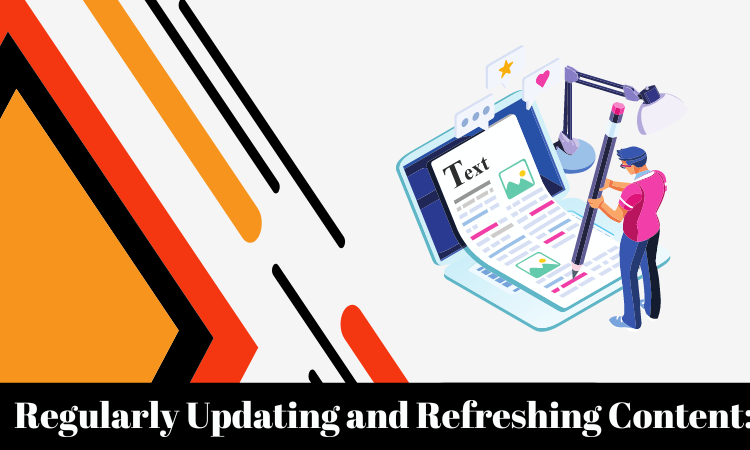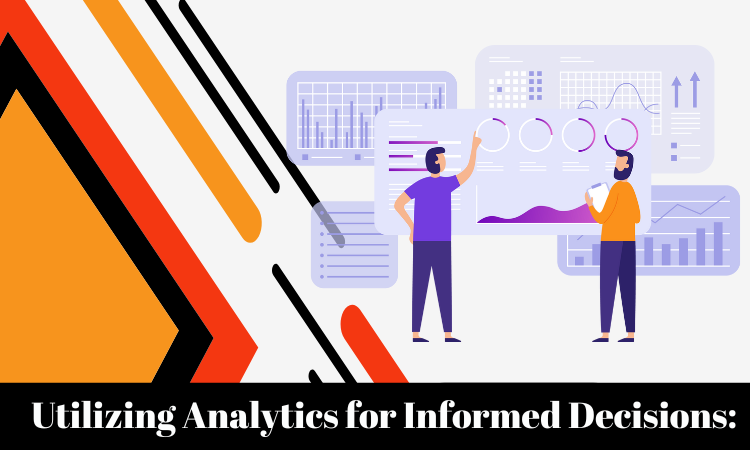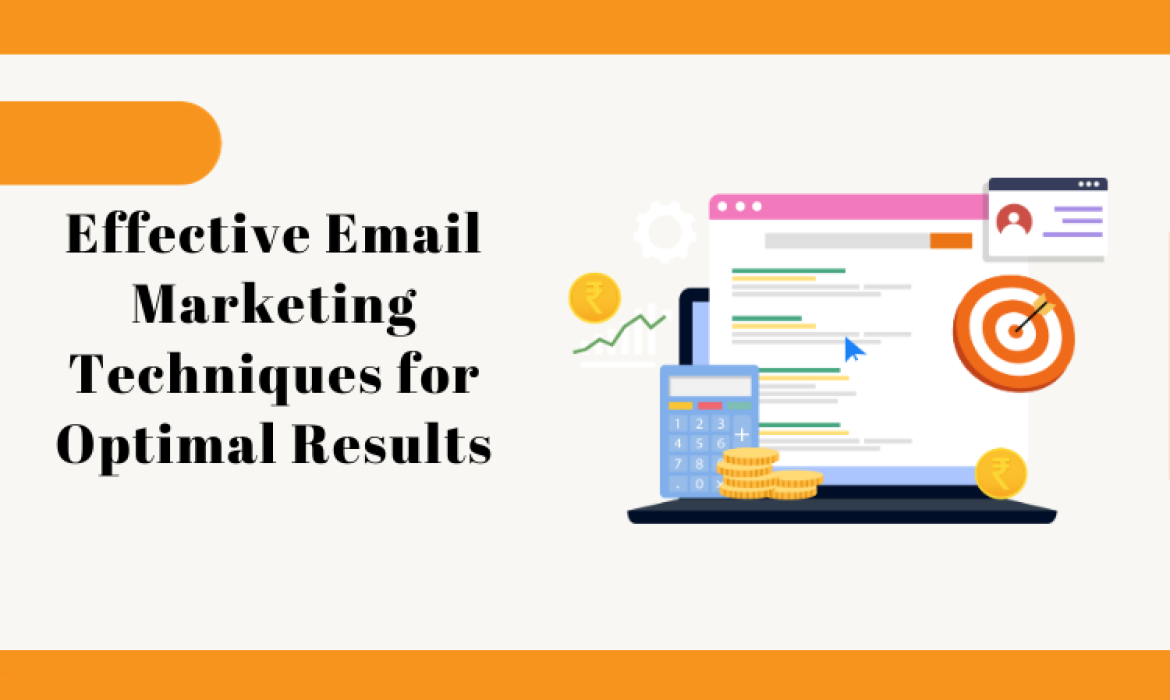Unveiling the Best and Most Effective Email Marketing Techniques for Optimal Results
Crafting a Path to Success with Email Marketing Mastery
In the dynamic realm of digital marketing, email remains a powerful tool for connecting with audiences, fostering relationships, and driving business success. This comprehensive guide aims to unravel the intricacies of email marketing, providing actionable insights and strategies for marketers looking to achieve optimal results in their campaigns.
Understanding the Essence of Email Marketing
The Evolution of Email Marketing
Email marketing has come a long way since its inception. From simple text-based messages to visually appealing and interactive content, the evolution of email marketing reflects the changing landscape of digital communication. Understanding this evolution sets the stage for implementing effective strategies in the contemporary marketing landscape.
Why Email Marketing Matters in the Digital Age
Some people might be surprised to learn that email marketing is still relevant in an era where social media and instant messaging apps are prevalent. This section explores the reasons why email marketing remains a cornerstone of digital strategies, examining its unmatched reach, direct communication capabilities, and adaptability to changing consumer behaviours.
Building a Solid Foundation
Setting Clear Objectives and Goals
Success in email marketing begins with a clear understanding of the objectives and goals. Whether aiming to drive sales, build brand awareness, or nurture leads, defining these goals provides a roadmap for crafting targeted and impactful campaigns.
Creating a Targeted and Engaged Audience
Building a responsive email list is foundational to effective email marketing. This section delves into strategies for audience segmentation, list building, and methods for ensuring engagement. An engaged audience is more likely to convert, making audience development a critical aspect of success.
Crafting Compelling Content
The Art of Captivating Subject Lines
In a crowded inbox, the subject line is the gateway to capturing attention. Crafting compelling subject lines is an art that involves creativity, relevance, and a touch of psychology. Explore techniques for creating subject lines that entice recipients to open and engage with emails.
Designing Engaging and Responsive Email Templates
The visual appeal and responsiveness of email templates play a pivotal role in the user experience. This section guides marketers through best practices for designing templates that not only look good on various devices but also enhance the overall impact of the email content.
Incorporating Persuasive Call-to-Action Elements
The ultimate goal of many email campaigns is to prompt action. Learn how to create persuasive calls-to-action (CTAs) that drive desired outcomes, whether purchasing, downloading content, or signing up for an event. From placement to language, every element contributes to the effectiveness of the CTA.
Navigating the Email Marketing Landscape with Expert Techniques
Leveraging Advanced Segmentation Strategies
Personalization: Tailoring Messages for Individual Audiences
Personalization goes beyond addressing recipients by their first name. Dive into advanced personalization strategies, exploring ways to tailor content based on user preferences, behaviour, and demographic data. Discover how personalized messaging can significantly impact engagement and conversions.
Behavioural Segmentation: Understanding and Responding to User Actions
Behavioral segmentation involves analyzing how users interact with emails and responding accordingly. Uncover techniques for segmenting audiences based on user behaviour, such as opens, clicks, and purchases. Learn how to create targeted campaigns that resonate with specific segments of your audience.
Maximizing Automation for Efficiency
Implementing Effective Drip Campaigns
Drip campaigns, or automated email sequences, are a cornerstone of efficient email marketing. Explore the nuances of drip campaigns, including when and how to use them effectively. From onboarding sequences to re-engagement campaigns, discover the power of automation in nurturing leads through the customer journey.
Utilizing Triggered Emails for Timely Communication
Triggered emails are timely responses to specific user actions or events. This section explores the implementation of triggered emails, from abandoned cart reminders to post-purchase follow-ups. Discover how triggered emails enhance relevancy and contribute to a seamless customer experience.
Optimizing for Deliverability and Engagement
Best Practices for Email Deliverability
High deliverability is crucial for the success of any email marketing campaign. Uncover best practices for improving deliverability, including maintaining a clean email list, optimizing sender reputation, and adhering to industry standards. Learn how to navigate spam filters and ensure your emails reach their intended audience.
Increasing Engagement with Interactive Content
Interactive content transforms static emails into dynamic experiences. Explore the types of interactive content that resonate with audiences, from polls and quizzes to gamification elements. Discover how interactive elements not only engage recipients but also provide valuable data for refining future campaigns.
Analyzing, Refining, and Measuring Success
Harnessing the Power of Analytics
Key Metrics for Evaluating Email Campaign Performance
Analyzing campaign performance requires a nuanced understanding of key metrics. Explore metrics such as open rates, click-through rates, conversion rates, and more. Learn how to interpret these metrics to gain insights into user behaviour and campaign effectiveness.
Using A/B Testing for Continuous Improvement
A/B testing, or split testing, is a method for optimizing email campaigns by comparing variations of elements such as subject lines, content, and CTAs. Delve into the principles of A/B testing, including experimental design, execution, and interpretation of results. Discover how ongoing testing contributes to continuous improvement.
Incorporating Feedback Loops
Gathering and Analyzing Subscriber Feedback
Subscriber feedback is a valuable source of insights for refining email campaigns. Explore methods for collecting and analyzing feedback, including surveys, polls, and direct communication channels. Understand how listening to your audience can uncover areas for improvement and innovation.
Adjusting Strategies Based on Performance Insights
Data-driven decision-making is at the core of successful email marketing. This section discusses how to interpret performance insights and adjust strategies accordingly. Whether scaling successful campaigns or pivoting based on audience feedback, flexibility and adaptability are key to sustained success.
Staying Ahead with Emerging Trends and Innovations
Exploring the Future of Email Marketing
The Impact of Artificial Intelligence and Machine Learning
Artificial intelligence (AI) and machine learning (ML) are transforming the landscape of email marketing. Explore the applications of AI and ML in areas such as predictive analytics, content optimization, and personalized recommendations. Understand how these technologies enhance efficiency and effectiveness.
Interactive and Dynamic Content Trends
The future of email marketing involves pushing the boundaries of static content. Dive into emerging trends in interactive and dynamic content, including AMP for email and other innovations. Discover how these trends redefine user engagement and open new possibilities for creativity.
Adapting to Regulatory Changes
Navigating Data Privacy Regulations
In an era of heightened awareness of data privacy, marketers must navigate a landscape of regulations. This section provides guidance on adhering to data privacy regulations, including GDPR and CCPA. Learn best practices for obtaining consent, ensuring transparency, and safeguarding user data.
Building Trust through Transparent Communication
Transparency is a cornerstone of building trust with your audience. Explore strategies for transparent communication, from clear privacy policies to openly addressing user concerns. Discover how transparent practices not only comply with regulations but also foster a positive relationship with subscribers.
Mastering the Art and Science of Email Marketing
Reflecting on the Journey
Embracing Successes and Learning from Challenges
Achievements and difficulties are both part of the journey to success in email marketing. Reflect on the milestones achieved, campaigns that resonated, and lessons learned from moments of adversity. Acknowledge the dynamic nature of the digital landscape and the continuous learning inherent in mastering email marketing.
The Ever-Evolving Landscape of Email Marketing
As technology advances and consumer behaviours evolve, the landscape of email marketing continues to change. Embrace the reality that mastering email marketing is an ongoing process. Stay attuned to industry trends, innovations, and shifts in consumer preferences. Commit to continuous learning and adaptation to remain at the forefront of this dynamic discipline.
Encouraging Ongoing Mastery
Continuous Learning and Adaptation
The field of email marketing is ever-evolving, and successful marketers are those who embrace a mindset of continuous learning. Explore resources for staying updated on industry trends, attending conferences, and engaging with the vibrant email marketing community. Commit to refining skills and adopting new strategies as the digital landscape evolves.
Inspiring Creativity and Innovation in Email Marketing
Creativity is the fuel that propels successful email marketing campaigns. Encourage a culture of innovation within your team or organization. Explore ways to infuse creativity into content creation, design, and the overall campaign strategy. Remember that pushing the boundaries of what’s possible often leads to breakthroughs and memorable campaigns.
In email marketing, mastering success requires a combination of strategic planning, technical expertise, and a deep understanding of audience dynamics. By implementing the best and most effective techniques outlined in this guide, marketers can navigate the complexities of email marketing with confidence, optimize campaigns for optimal results, and cultivate lasting relationships with subscribers.
Exploring the Future of Email Marketing
In the ever-evolving landscape of digital marketing, staying ahead requires a keen eye on emerging trends and innovations. This section delves into the future of email marketing, examining how artificial intelligence (AI) and machine learning (ML) are reshaping strategies and the rise of interactive and dynamic content trends.
The Impact of Artificial Intelligence and Machine Learning
Transforming Predictive Analytics
Artificial intelligence and machine learning have revolutionized predictive analytics in email marketing. Predictive analytics enables marketers to anticipate user behaviour, preferences, and engagement patterns. Explore how AI and ML algorithms analyze vast datasets to provide insights that enhance the personalization and targeting of email campaigns.
Content Optimization with AI
AI-driven content optimization is elevating the relevance of email content. From subject lines to body copy, discover how machine learning algorithms analyze user interactions and responses to refine content recommendations. Explore case studies of successful AI-driven content optimization, revealing the power of delivering the right message to the right audience.
Interactive and Dynamic Content Trends
AMP for Email: A Game-Changer
The advent of Accelerated Mobile Pages (AMP) for email has transformed static emails into dynamic, interactive experiences. Explore the capabilities of AMP for email, from dynamic forms to real-time updates. Understand how this technology enhances user engagement and opens new possibilities for marketers seeking to captivate their audience.
Beyond Static Images: Interactive Elements
Interactive content extends beyond AMP, encompassing a range of elements that engage recipients. Dive into trends such as gamification, quizzes, and embedded video. Uncover case studies illustrating how interactive elements not only boost engagement but also provide valuable insights into user preferences.
Adapting to Regulatory Changes
Regulatory changes and data privacy concerns demand careful attention as the digital landscape matures. This section addresses how marketers can navigate regulatory changes, focusing on compliance with data privacy regulations, building trust through transparent communication, and ensuring ethical practices.
Navigating Data Privacy Regulations
GDPR and Beyond: A Global Perspective
The General Data Protection Regulation (GDPR) sets a precedent for data privacy regulations globally. Explore the implications of GDPR on email marketing practices and how marketers worldwide are adapting to similar regulations, such as the California Consumer Privacy Act (CCPA). Understand the principles of consent, data minimization, and user rights that underpin these regulations.
Building Trust through Transparent Communication
Transparency is paramount to maintaining trust with subscribers. Learn how transparent communication about data practices, privacy policies, and opt-in mechanisms strengthens the relationship between marketers and their audiences. Explore best practices for crafting clear and concise privacy statements that resonate with users.
Conclusion: Mastering the Art and Science of Email Marketing
Reflecting on the Journey
The journey through the intricate landscape of email marketing involves a continual process of learning, adapting, and embracing the dynamics of an ever-changing industry. Reflect on the successes achieved and the valuable lessons learned from the challenges encountered along the way.
Embracing Successes and Learning from Challenges
Successes in email marketing are not just markers of achievement; they are lessons in themselves. Explore case studies of campaigns that achieved remarkable results and understand the strategies that contributed to their success. Learn from the challenges faced, whether they were related to deliverability, engagement, or evolving industry trends.
The Ever-Evolving Landscape of Email Marketing
The only constant in the world of email marketing is change. Explore how the landscape of email marketing continues to evolve, from the latest technological advancements to shifts in consumer behaviours. Acknowledge the importance of adaptability and a forward-thinking approach to navigate the challenges and opportunities that lie ahead.
Encouraging Ongoing Mastery
Continuous Learning and Adaptation
Mastery in email marketing is a journey, not a destination. Encourage a culture of continuous learning within your team or organization. Explore resources for staying updated on industry trends, attending conferences, and engaging with the vibrant email marketing community. Embrace a mindset that values curiosity, exploration, and a commitment to staying at the forefront of industry advancements.
Inspiring Creativity and Innovation in Email Marketing
Creativity is the spark that fuels innovation in email marketing. Explore ways to inspire creativity within your team, from brainstorming sessions to cross-disciplinary collaboration. Case studies of innovative campaigns demonstrate the power of thinking outside the box and pushing the boundaries of what’s possible in email marketing.
In the ever-evolving landscape of email marketing, mastery is a dynamic process that combines the art of creativity with the science of analytics. By exploring emerging trends, adapting to regulatory changes, and encouraging ongoing mastery, marketers can position themselves as leaders in this dynamic field, consistently delivering optimal results and forging lasting connections with their audience.
9 Easy Practices to Increase Revenue with Website Organic Traffic
In the dynamic landscape of online business, the importance of organic traffic cannot be overstated. It serves as the lifeblood of a website, bringing in visitors who are actively seeking products, services, or information. While paid advertising can provide a quick boost, organic traffic is a sustainable force that can significantly impact a website’s revenue over the long term.
This article explores nine easy practices that can help businesses increase revenue by optimizing their websites for organic traffic. From content optimization to social media strategies, these practices encompass a holistic approach to improving visibility, engagement, and ultimately, conversion rates.
Optimizing Content for Search Engines
Keyword Research and Integration
Keyword research is the foundation of any successful SEO strategy. Identifying the right keywords allows businesses to understand what their target audience is searching for. Tools like Google Keyword Planner and SEMrush can assist in finding relevant keywords with a balance of search volume and competition.
Once keywords are identified, integration into content is crucial. Strategic placement in titles, headers, and throughout the body of the content helps search engines understand the relevance of the page to user queries. However, it’s important to maintain a natural and reader-friendly flow, avoiding keyword stuffing that can harm the user experience.
Implementing SEO Best Practices
Crafting high-quality content is at the core of SEO success. Content should be informative, engaging, and provide real value to the audience. In addition to textual content, multimedia elements like images, videos, and infographics can enhance the overall user experience.
Implementing on-page SEO best practices involves optimizing meta titles, meta descriptions, and image alt text. These elements not only help search engines understand the content but also contribute to higher click-through rates when users see the website in search results.
Enhancing User Experience for Higher Engagement
Mobile Optimization
With the increasing use of smartphones, mobile optimization is no longer optional. Google prioritizes mobile-friendly websites in its search rankings, making it essential for businesses to ensure their websites are responsive and provide a seamless experience across devices.
Mobile optimization includes considerations for page layout, font sizes, and touch-friendly navigation. Ensuring that users can easily access and navigate the website on their mobile devices enhances both the user experience and search engine rankings.
Fast Loading Times
Website speed is a critical factor in user satisfaction and search engine rankings. Slow-loading pages can lead to higher bounce rates, negatively impacting the website’s performance in search results.
Optimizing images, leveraging browser caching, and using content delivery networks (CDNs) are effective strategies to improve loading times. Regular performance audits and optimizations contribute to a positive user experience, encouraging visitors to stay and explore the website.
User-Friendly Navigation
A well-designed and intuitive navigation structure is key to keeping users engaged. Clear menus, logical categorization, and a straightforward path to relevant information contribute to a positive user experience.
Effective navigation not only benefits users but also helps search engines crawl and index the website more efficiently. Implementing breadcrumb trails and ensuring that every page is accessible within a few clicks from the homepage enhances the overall usability of the site.
Harnessing the Power of Social Media

Sharing Engaging Content
Social media platforms provide an opportunity to amplify the reach of your content. Creating shareable content encourages users to distribute it within their networks, expanding the visibility of your brand.
Engaging content can take various forms, including blog posts, infographics, videos, and interactive polls. Understanding the preferences of your target audience on different social platforms helps tailor content for maximum impact.
Building a Strong Social Media Presence
Consistency is key when building a social media presence. Regularly updating profiles, sharing relevant industry news, and actively engaging with followers contribute to a positive and dynamic image.
Each social media platform has its unique strengths and user demographics. Tailoring content to suit the specific audience and trends of each platform ensures that the brand’s message resonates effectively.
Building a Robust Backlink Profile
Backlinks remain a crucial factor in search engine algorithms, acting as “votes of confidence” from other websites. Building a robust backlink profile involves acquiring high-quality links from reputable sources within your industry.
Strategies such as guest posting, influencer collaborations, and participation in industry forums contribute to a diverse and authoritative backlink profile. It’s important to focus on quality over quantity, as low-quality or spammy backlinks can have a detrimental impact on SEO.
Natural Link-Building Strategies
Encouraging natural link-building involves creating content that others in the industry naturally want to link to. This could include in-depth research, unique insights, or compelling visuals that serve as a valuable resource for others.
Engaging with industry communities, sharing insights, and participating in discussions can organically lead to others referencing and linking to your content. Natural link-building not only enhances SEO but also establishes your website as an authoritative source in your field.
Guest Posting and Collaboration
Collaborating with influencers, industry leaders, or other businesses through guest posting can significantly expand your reach. By contributing valuable content to other websites, you not only tap into their audience but also earn authoritative backlinks that enhance your website’s SEO.
When pursuing guest posting opportunities, it’s important to choose reputable and relevant platforms. Craft content that aligns with the host site’s audience and provides genuine value. This collaborative approach benefits both parties by fostering cross-promotion and establishing authority within the industry.
Monitoring and Disavowing Harmful Links
Regularly monitoring your backlink profile is essential for maintaining a healthy online presence. Tools like Google Search Console and third-party services can help identify any harmful or spammy backlinks that may negatively impact your SEO.
The Google Disavow tool enables website owners to inform the search engine that they do not want to be associated with any particular harmful links. This proactive approach helps mitigate the potential damage to your website’s SEO.
In conclusion, the combination of these nine practices provides a comprehensive strategy for increasing revenue through website organic traffic. By optimizing content for search engines, enhancing the user experience, and leveraging the power of social media and backlinks, businesses can create a robust online presence that attracts and retains valuable visitors. As the digital landscape continues to evolve, staying informed about the latest SEO trends and adapting strategies accordingly is crucial for sustained success in the competitive online market.

Google My Business Optimization:
A cornerstone of local SEO is optimizing your Google My Business (GMB) listing. Complete your profile with accurate business information, including your address, phone number, business hours, and relevant categories. Regularly update your GMB profile with fresh content, images, and any changes to business details.
Local Keywords and Citations:
Integrate location-specific keywords naturally into your website’s content and metadata. This helps search engines understand your geographical relevance. Additionally, ensure consistent business information across online directories and platforms. These citations play a crucial role in local search rankings.
Encouraging Customer Reviews:
Positive customer reviews not only build trust but also impact local search rankings. Encourage satisfied customers to leave reviews on platforms like Google, Yelp, and Facebook. Respond to reviews promptly, addressing both positive and negative feedback to demonstrate your commitment to customer satisfaction.
Regularly Updating and Refreshing Content:
Search engines favor websites that regularly update their content. Develop a content calendar to keep your website fresh and engaging. This could include blog posts, news updates, or any other relevant information that adds value to your audience.

Importance of Fresh Content for SEO:
Fresh content signals to search engines that your website is active and relevant. It also provides opportunities to target new keywords and capture a broader audience. Regularly publishing fresh content can positively impact your search rankings and keep your audience engaged.
Updating Evergreen Content:
While creating new content is essential, don’t neglect your evergreen content – timeless pieces that remain relevant over time. Regularly update and enhance these articles to ensure accuracy and usefulness, signaling to search engines that your content is current and reliable.
Content Audits and Maintenance:
Perform regular content audits to identify outdated or underperforming content. Remove or update obsolete information and ensure that all content aligns with your current SEO and business goals.
Utilizing Analytics for Informed Decisions:
Implementing analytics tools like Google Analytics provides valuable insights into your website’s performance. Track key metrics such as website traffic, user behavior, and conversion rates to make data-driven decisions.

Setting Up and Monitoring Analytics Tools:
Ensure proper setup of analytics tools and regularly monitor their performance. This includes setting up goals, tracking conversions, and understanding user journeys on your website.
Analyzing User Behavior and Trends:
Deep dive into user behavior data to understand how visitors interact with your site. Identify popular pages, entry points, and areas for improvement. Analyzing trends helps you align your content strategy with user preferences.
Adjusting Strategies Based on Data Insights:
Use the insights gathered from analytics tools to adjust your SEO strategies. Focus on what works and refine areas that may need improvement. A data-driven approach ensures you stay agile in a dynamic online landscape.
Staying Informed About Algorithm Changes:
Search engine algorithms continually evolve, impacting search results and SEO strategies. Stay informed about algorithm updates from major search engines like Google to adapt your tactics accordingly.
Keeping Abreast of Search Engine Updates:
Beyond algorithm changes, stay updated on general search engine updates, features, and best practices. This knowledge ensures your strategies align with the latest developments in the digital landscape.
Adapting Strategies to Algorithm Changes:
When algorithm changes occur, be prepared to adapt your strategies. This may involve tweaking your content, adjusting keywords, or modifying other elements of your SEO approach to maintain or improve your search rankings.
Future-Proofing Your SEO Efforts:
Anticipate future trends and changes in the digital marketing landscape. By staying ahead of the curve, you can future-proof your SEO efforts and position your business for sustained online success.
Conclusion:
In conclusion, the journey to increasing revenue through website organic traffic demands a strategic embrace of essential practices that synergize to elevate online presence and user engagement. By prioritizing content optimization for search engines and crafting high-quality, relevant material, businesses lay a solid foundation for attracting and retaining their target audience.
A seamless user experience, achieved through mobile optimization, swift loading times, and intuitive navigation, is pivotal in converting visitors into customers. The strategic use of social media not only expands brand visibility but also aligns with SEO goals, creating a harmonious digital ecosystem.


